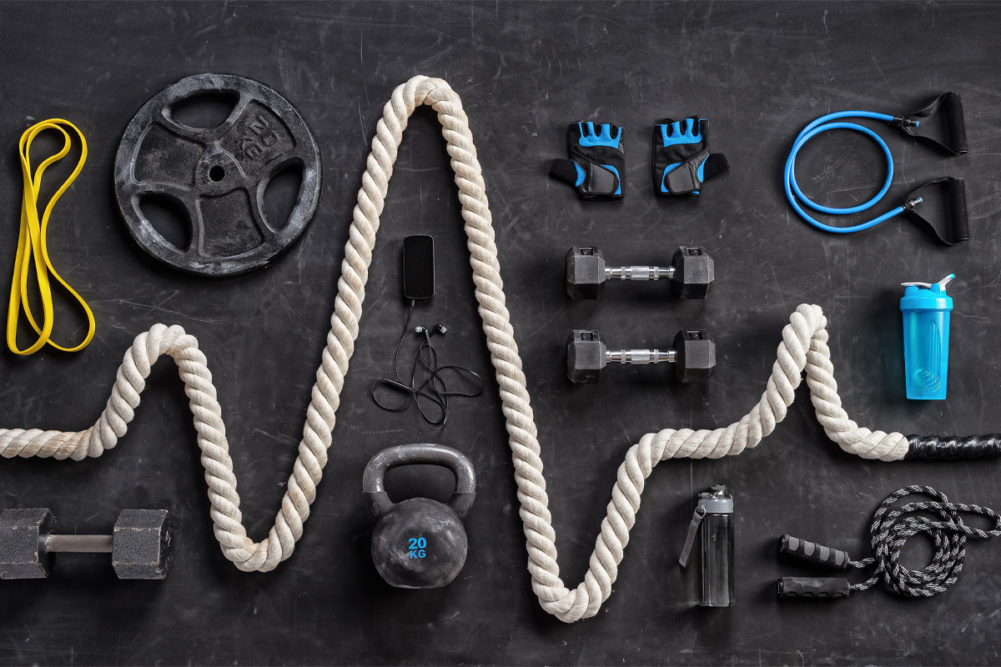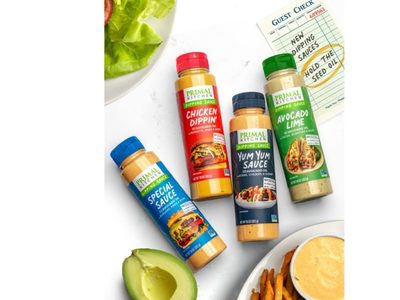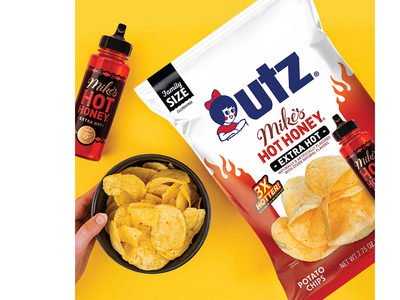CHICAGO — Many active consumers understand how nutrition influences performance and recovery after exercise. That knowledge has energized product developers to explore more diverse concepts for the sports nutrition sector. They have essentially redefined it to be the active nutrition category, with products often formulated for specific age ranges and gender.
“The sports nutrition category has expanded both in user base and application format,” said Catherine Kwik Uribe, chief science officer for Nutrition21, Saddle Brook, NJ. “No longer is the category limited to only sports beverages and protein powders, as there’s a growing range of sports supporting supplements in gels, gummies, effervescent tablets and other emerging formats. The expansion of new product formats has also drawn in new users, including younger consumers, women and especially aging active adults.”
Some people may be trying to build muscle or increase strength and endurance while others are looking for an energy boost during their workout. Sometimes it’s simply about hydration. Whatever the need, products must be formulated with efficacious ingredients to deliver the desired results.
“Consumers can be generally categorized into those who train regularly and rigorously and fall into the ‘athletes’ group, and those — the majority — who are ‘regularly active,’” said Kyle Krause, regional product manager − functional fibers and carbohydrates Beneo, Parsippany, NJ. “The beverage format is the best to replenish on-the-go sports endeavors without requiring a pause in the activity.”
The global sports nutrition market, which encompasses beverages, foods and supplements, is forecast to reach $75 billion by 2030, according to a new report by Grand View Research Inc., San Francisco. The growth represents a compound annual growth rate of 7.5% from 2024 to 2030.
“While proteins, electrolytes and caffeine have been staples in sports nutrition, we are seeing the continuing expansion of the category to include a range of novel compounds,” said Kwik Uribe. “From bioactives like flavanols that promote blood flow, urolithin A that works at the mitochondrial level to support energy metabolism and muscular function, and even herbals like ashwagandha and ginseng for the management of physical and mental stresses. Athletes of all types are incorporating ingredients that can help to not only optimize performance — both physically and mentally — but also accelerate recovery.”
Glanbia Nutritionals, Chicago, conducted a study on performance athletes. It showed they utilize a variety of products and are regularly relying on specific ingredients to meet their performance goals.
“One trending ingredient is creatine, which we found 37% of performance athletes in the US use regularly,” said Niki Kennedy, director insights and content at Glanbia Nutritionals. “One limitation of standard creatine monohydrate is it quickly degrades in liquid form, so its dominant use is in ready-to-mix beverages. However, we developed a soluble and stable creatine monohydrate specially designed for improved beverage performance. This ingredient’s patent-pending encapsulation technology facilitates its enhanced stability.”
As Krause mentioned, beverages, especially ready-to-drink beverages, are recognized as the most convenient format for many functional ingredients. With their inherent high-water content, beverages speak to the need of hydration.
“Preference for beverages is driven by their convenience, versatility and ability to promote hydration while also delivering essential nutrients to support performance and recovery,” said Vaughn DuBow, global director of marketing – microbiome solutions, ADM, Chicago. Whether in the form of sports drinks, protein shakes or electrolyte-infused waters, beverages support consumers with an accessible and effective way to fuel their bodies and optimize their performance before, during and after a workout.”
Research conducted for Dairy Management Inc. (DMI), Rosemont, Ill., showed that among health and wellness consumers, the No. 1 function they seek is hydration. And, they want the products to be natural, simple and inexpensive.
GoodSport, a Chicago-based startup, with the help of DMI, developed a clear hydration beverage that is 97% dairy. GoodSport launched in 2021 and delivers three times the electrolytes and 33% less sugar than traditional sports drinks.
GoGo squeeZ, New York, is introducing GoGo squeeZ Active Fruit Blend with Electrolytes. The shelf-stable pouches are formulated with fruits and help to replenish potassium, sodium and magnesium — electrolytes lost in sweat during physical activity — while also being a good source of antioxidants, including vitamin C, vitamin A and vitamin E.
Plano, Texas-based Keurig Dr Pepper also is playing in the active children’s space with its new Mott’s Active. The hydrating beverage is formulated with apple juice, coconut water and added electrolytes.
“Our vision for Mott’s Active is to be a part of the journey of parents and kids as they engage in a variety of sports and playtime occasions, with a product that delivers a refreshing source of hydration from a brand they trust,” said Derek Dabrowski, vice president and general manager.
Delivering sustained energy
After hydration, products providing sustained energy for performance are sought by active consumers. Sustained energy may come from various ingredients, including the carbohydrate isomaltulose.
“Glucose is the main fuel for the body and brain, and isomaltulose delivers it in a balanced, low-glycemic way to provide sustained energy, eliminating the sugar spike and crash that results from high-glycemic alternatives,” Krause said. “Derived from sugar beet, it has a mild, naturally sweet taste (half as sweet as sucrose) and leaves no aftertaste. Sensorial trials have shown that this alternative sugar positively affects the organoleptic profile of a drink.”
As isomaltulose releases glucose more slowly, it provides carbohydrate energy over a longer time, resulting in sustained energy. It also induces a low blood glucose response as the body releases only a reduced amount of insulin.
“Isomaltulose may be used as an alternative to sucrose, fructose or other carbohydrates, but also is suitable for use in combination with them to achieve the desired sweetness and immediate and long-term energy demands of athletes and active individuals,” Krause said. “It is ideal for use in almost all kinds of sports food and beverages including ready-to-drink and instant beverages, sports gels, jellies and bars without compromising on taste and texture.”
Protein also plays a role in providing sustained energy. Whey has been recognized as the gold standard for post-workout muscle repair and recovery. However, it’s the other cows’ milk protein — casein — that provides sustained energy, as whey proteins are digested faster than casein proteins. On the plant side, soy proteins are also slowly digested.
“Consumers are increasingly interested in a wider range of protein sources, with many turning to alternative and plant-based protein options,” DuBow said. “Soy and pea are stand-out protein sources for the sports and active nutrition spaces, for both protein diversity and content.”
Mental performance matters, too
Traditionally, sports nutrition products were marketed to help one be bigger, faster and/or stronger. Today assisting with focus and addressing recovery has become part of the category.
“Cognitive functions, such as focus and attention, are given equal importance alongside traditional aspects like physical recovery and hydration,” said Maria Stanieich, marketing manager, Kyowa Hakko USA, New York. “This shift acknowledges the interconnectedness of mental and physical performance, reflecting an evolving understanding of how improvements in cognitive health can have positive downstream effects on physical well-being.”
Kyowa Hakko markets a patented form of citicoline, a nutrient found in the human body. The company conducted studies showing how the ingredient supports focus and attention.
“This is ideal for athletes looking to optimize their performance,” Stanieich said. “The ingredient is highly adaptable for various beverage formulations, chewing gum and more. One of its key advantages lies in its neutral taste profile. This ensures that it can seamlessly integrate into existing formulations without altering the flavor of the final product.”
Scientific studies have shown a connection between the gut microbiome and physical and mental health. This “gut-muscle axis” is showing what may be possible for muscle health support.
“This increased awareness and understanding of the gut microbiome is a modern turning point for sports and active nutrition solutions, with consumers showing interest in seeing gut microbiome-supporting ingredients, including prebiotics, probiotics and postbiotics, in their sports and active nutrition purchases,” DuBow said.




